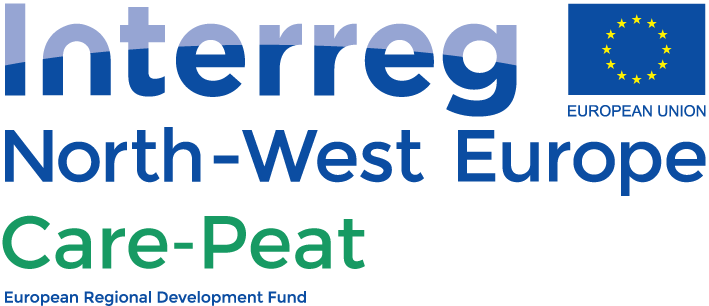News
Care-Peat - Restoring the carbon storage capacity of peatlands
Date Released: Thursday, September 30, 2021
Key Information
EU Funding
€4.22m
Total Budget
€7.03m
Timeline
2019-2023
Taking care of peatlands
Care-Peat is an Interreg North-West Europe (NWE) project with 12 partners working together to reduce carbon emissions and restore the carbon storage capacity of different types of peatlands in North-West Europe. The main partnership consists of 7 knowledge institutes and 5 nature organisations from Belgium, France, Ireland, the Netherlands and the United Kingdom. Together with 5 sub-partners and 47 associated partners, we develop and test new techniques and socio-economic strategies for carbon reduction.
Peatlands tackling climate change
Why focus on peatlands? Peatlands are not only habitats with a highly specialised flora and fauna, they also play an important role in global climate regulation. Northern hemisphere peatlands count for 3 to 5% of total land area and contain approximately 33% of global soil carbon. Therefore peatlands have a strong natural potential to save carbon and play an important role in nature based solutions for climate change.
When peatlands are drained, the well preserved carbon is released as greenhouse gases to the atmosphere. That is why it is important to keep peatlands wet. Unfortunately many peatlands are degraded and emit rather than store carbon. The global annual greenhouse gas emissions from drained organic soils are twice that from aviation. We need to act now to prevent further degradation and encourage more recovery of our remaining peatlands.
What does Care-Peat do?
The main goal of Care-Peat is to set up and demonstrate innovative technologies for new restoration and carbon measurement techniques and involve local and regional stakeholders.
Therefore the nature organisations, together with local landowners, restore peatlands of 7 different pilot sites ranging from one to 250 hectares and demonstrate the (potential) carbon savings of the restoration. For each pilot site different restoration techniques are used - from manual management to growing additional peat moss. Throughout the project the organisations are supported by the knowledge institutes that work together to develop and test new equipment, methods and models to predict carbon flows (e.g. by the use of drones and satellites to guide restoration and provide input for carbon models). Care-Peat also works with innovative companies in the field of restoration and develops partnerships with local and regional stakeholders to increase the impact of pilots and maximise socio-economic benefits.
Important outputs of Care-Peat are the publication of a management and decision support tool and a set of socio-economic models concerning the best options for peatland restoration in regard to carbon storage. This way the results of the project are transferred and replicated to users across North-West Europe to determine the most appropriate management measures, even after Care-Peat has ended.
In 2021, as part of the Interreg NWE programme, the Care-Peat project was given the opportunity to strengthen its scope with a so called ‘capitalisation project’. The aim is to apply the project results to new areas and a new target group in North-West Europe. The approval resulted in no less than 3 new partners and 6 new associated partners who joined our consortium.
In the capitalisation project we develop a unified methodology for assessing GHG emissions from peatlands, that is widely applicable in North-West Europe (different peatland types and regions), and thus increase the impact of the decision support tool. Also we include farmers and farmer organisations as a new main target group by engaging with them directly and incorporate best practices for carbon savings on farmland.
How much carbon can be saved?
Care-Peat is ambitious. By the end of the project in 2023, we expect that about 8137 tonnes of carbon emissions per year are prevented from losses and stored in the 7 pilot sites (in total approximately 645 hectares).
After 2023 we hope that nature conservation and other organisations all over the North-West Europe region will take further measures, resulting in the restoration of many more peatlands. And the more peatlands are restored, the more carbon is saved. In this way peatlands can become an important natural partner in climate policies across North-West Europe.

